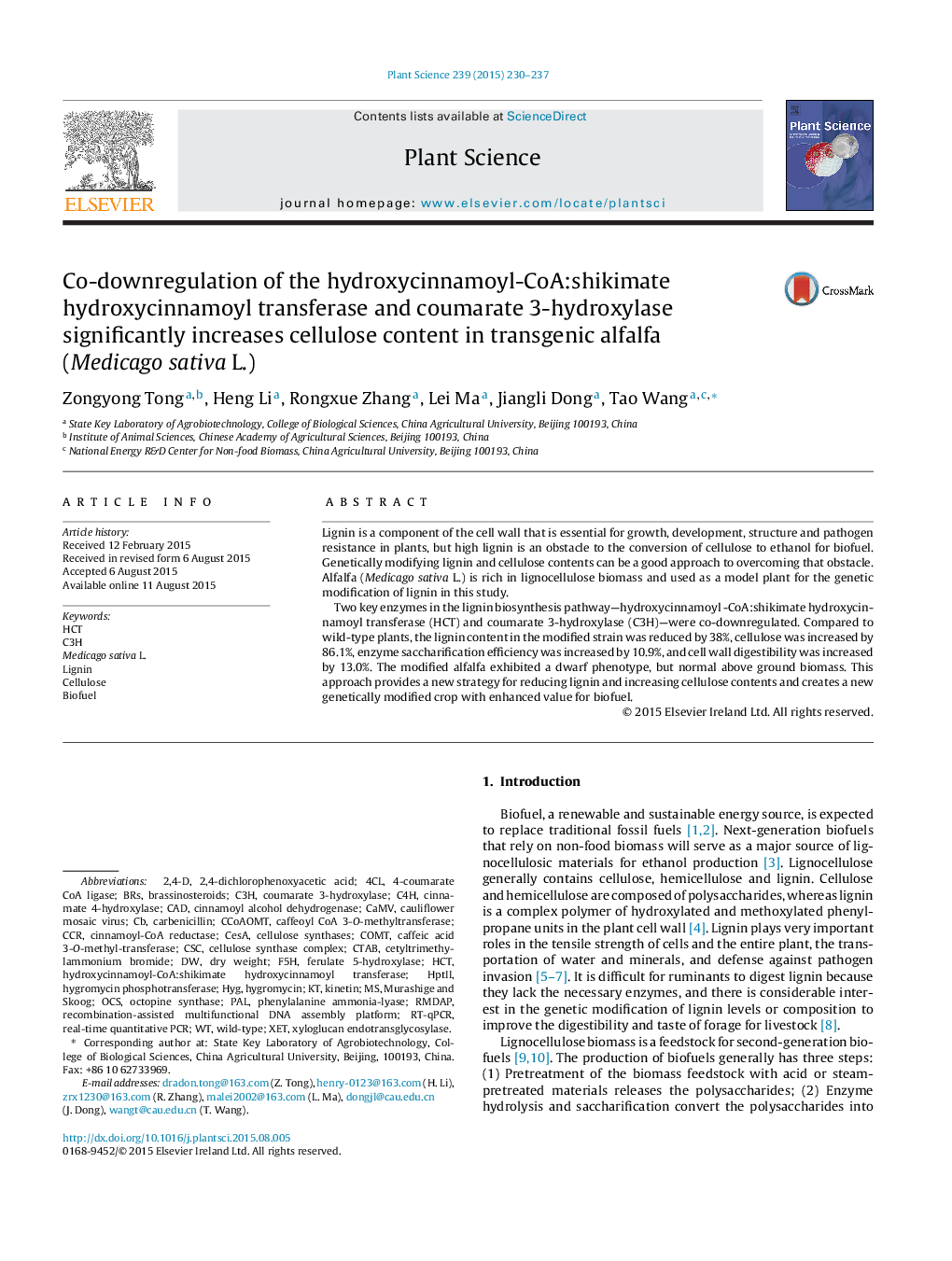| Article ID | Journal | Published Year | Pages | File Type |
|---|---|---|---|---|
| 2016998 | Plant Science | 2015 | 8 Pages |
•Co-suppressed the two key enzymes in the lignin biosynthesis pathway—HCT and C3H in alfalfa.•The genetically modified alfalfa exhibits reduced lignin content, increased cellulose content and increased saccharification efficiency.•The genetically modified alfalfa improves the recovery of fermentable sugars from lignocellulosic materials.
Lignin is a component of the cell wall that is essential for growth, development, structure and pathogen resistance in plants, but high lignin is an obstacle to the conversion of cellulose to ethanol for biofuel. Genetically modifying lignin and cellulose contents can be a good approach to overcoming that obstacle. Alfalfa (Medicago sativa L.) is rich in lignocellulose biomass and used as a model plant for the genetic modification of lignin in this study.Two key enzymes in the lignin biosynthesis pathway—hydroxycinnamoyl -CoA:shikimate hydroxycinnamoyl transferase (HCT) and coumarate 3-hydroxylase (C3H)—were co-downregulated. Compared to wild-type plants, the lignin content in the modified strain was reduced by 38%, cellulose was increased by 86.1%, enzyme saccharification efficiency was increased by 10.9%, and cell wall digestibility was increased by 13.0%. The modified alfalfa exhibited a dwarf phenotype, but normal above ground biomass. This approach provides a new strategy for reducing lignin and increasing cellulose contents and creates a new genetically modified crop with enhanced value for biofuel.
